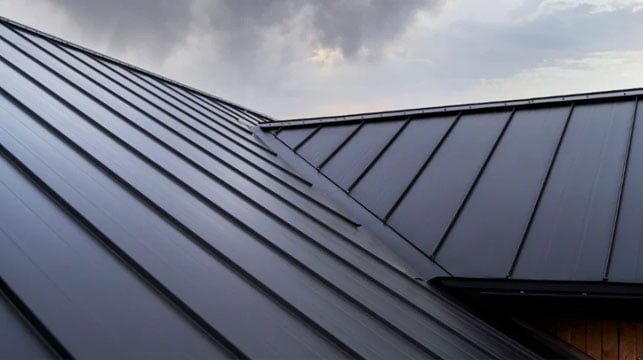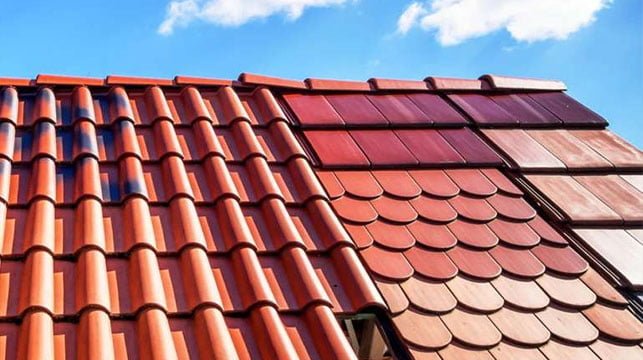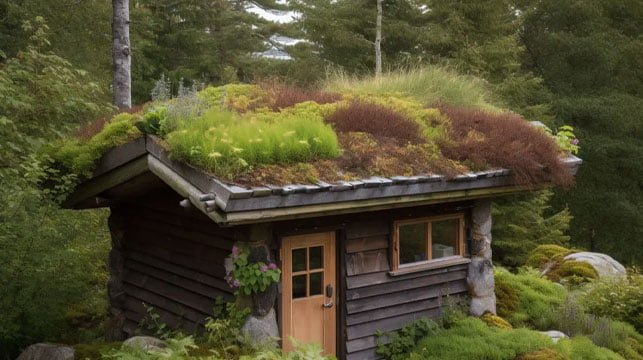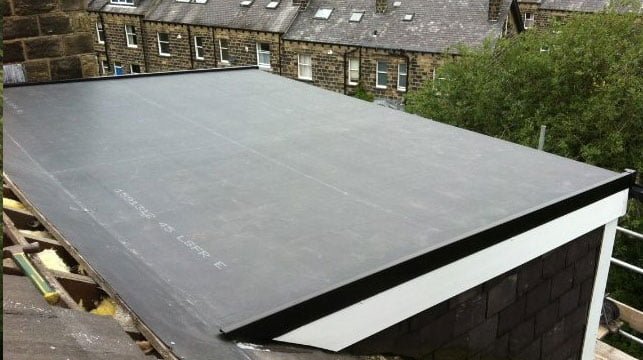Have you ever wondered how much energy your home’s roof could be wasting? In today’s energy-conscious world, the type of roofing material you choose can make a significant difference in your energy bills and carbon footprint. So, what if there was a way to keep your home cozy while saving money and helping the environment? Well, you’re in luck because we’ve got the scoop on 12 energy-efficient roofing materials that can do just that!
Introduction
Your roof is like the superhero cape of your home, protecting it from the elements and keeping it snug as a bug. But did you know that some roofing materials are better than others at keeping your energy costs down? That’s right, folks! By choosing the right roof, you can save yourself some serious cash and reduce your home’s environmental impact.
In this article, we’ll dive into the world of energy-efficient roofing and explore 12 different materials that can help you achieve those cost-saving and eco-friendly goals. From sleek metal roofs to cool green roofs, we’ve got something for everyone. So, buckle up and get ready to learn about the roofing materials that’ll have your wallet and Mother Nature singing your praises!
1. Asphalt Shingles

Ah, the classic asphalt shingle – a staple in the roofing world! These little guys come in two main varieties: 3-tab and architectural. While they might not be the most energy-efficient option out there, they can still help you save some green if you choose the right ones.
Tab Asphalt Shingles
These are the basic, flat shingles you’ve probably seen on countless homes. They’re affordable and easy to install, but they don’t offer much in terms of energy efficiency. However, if you opt for light-colored 3-tab shingles, you can reflect a bit more heat away from your home, keeping things cooler inside.
While asphalt shingles might not be the most energy-efficient roofing material out there, they can still help you save on energy costs if you choose the right type and color. Plus, they’re budget-friendly and easy to maintain, making them a popular choice for many homeowners.
2. Metal Roofing

When it comes to energy efficiency, metal roofing is like the superhero of the roofing world! These sleek and stylish roofs not only look great but can also help you save big bucks on your energy bills. Metal roofs come in a variety of styles, including standing seam, metal shingles, and metal tiles.
Standing Seam Metal Roofs
These roofs are made up of long, vertical panels that are joined together with raised seams. They’re incredibly durable and can last up to 50 years or more! Plus, their reflective surface helps bounce solar radiation away from your home, keeping things nice and cool inside.
Metal Shingles and Tiles
If you’re going for a more traditional look, metal shingles and tiles might be the way to go. They mimic the appearance of classic roofing materials like slate or clay tiles but offer the energy-efficient benefits of metal. These roofs are also incredibly low-maintenance and can withstand even the toughest weather conditions.
No matter which type of metal roof you choose, you can expect to save serious cash on your energy bills. Metal roofs are highly reflective, which means they absorb less heat from the sun, keeping your home cooler in the summer. And in the winter, they can help retain heat inside your home, reducing your heating costs. Talk about a win-win!
3. Clay Tiles

If you’re going for a classic, Mediterranean-inspired look, clay tiles might be the roofing material for you. These beautiful and durable tiles come in a variety of styles, including Spanish, flat, and barrel tiles.
While clay tiles aren’t the most energy-efficient option out there, they can still help you save on energy costs if you choose the right type. Here’s a closer look at the different kinds of clay tiles:
Spanish Clay Tiles
These iconic, barrel-shaped tiles are a classic choice for Mediterranean-style homes. While they’re not the most energy-efficient option, their curved shape can help create natural ventilation, allowing hot air to escape from your attic.
Flat Clay Tiles
As the name suggests, flat clay tiles have a smooth, uniform surface. They’re a bit more energy-efficient than their Spanish counterparts because their flat shape doesn’t trap as much heat.
Barrel Clay Tiles
These tiles have a slightly curved shape, similar to Spanish tiles but less pronounced. They offer a happy medium between the classic look of Spanish tiles and the energy efficiency of flat tiles.
While clay tiles might not be the most energy-efficient roofing material out there, they can still help you save on energy costs if you choose the right type and color. Plus, they’re incredibly durable and can last for decades with proper maintenance.
4. Concrete Tiles
If you’re looking for a roofing material that’s both energy-efficient and durable, concrete tiles might be the way to go. These sturdy tiles are made from a mixture of cement, sand, and water, and come in a variety of shapes and styles.
When it comes to concrete tiles, you’ve got a few options to choose from:
Flat Concrete Tiles
These tiles have a smooth, uniform surface that helps reflect solar radiation, keeping your home cooler in the summer months.
Interlocking Concrete Tiles
These tiles are designed to fit together like puzzle pieces, creating a seamless and watertight surface. They’re incredibly durable and can withstand even the toughest weather conditions.
S-Shaped Concrete Tiles
These tiles have a unique, curved shape that creates natural ventilation channels, allowing hot air to escape from your attic and keeping your home cooler.
No matter which style of concrete tile you choose, you can expect excellent energy efficiency and durability. Concrete tiles are naturally insulating, which means they can help regulate the temperature inside your home and reduce your energy costs. Plus, they’re incredibly low-maintenance and can last for decades with proper care.
5. Slate Tiles
If you’re looking for a roofing material that oozes sophistication and timeless beauty, slate tiles might be the way to go. These stunning tiles are quarried from natural stone and come in a variety of rich colors, including gray, green, and purple.
When it comes to slate tiles, you’ve got two main options:
Natural Slate Tiles
These tiles are made from real, natural stone and offer unparalleled beauty and durability. They’re incredibly energy-efficient thanks to their natural insulating properties, and can help regulate the temperature inside your home.
Synthetic Slate Tiles
If you’re looking for a more budget-friendly option, synthetic slate tiles might be the way to go. These tiles are made from a mixture of recycled materials and are designed to mimic the look and feel of natural slate. While they’re not quite as energy-efficient as the real deal, they still offer good insulation and can help reduce your energy costs.
No matter which type of slate tile you choose, you can expect a beautiful and long-lasting roof that can help you save on energy costs. Slate tiles are incredibly durable and can last for over 100 years with proper maintenance.
6. Solar Tiles
If you’re looking for the ultimate in energy efficiency, solar tiles might be the way to go. These innovative roofing tiles are embedded with solar cells that capture energy from the sun and convert it into electricity for your home.
When it comes to solar tiles, you’ve got two main options:
Monocrystalline Solar Tiles
These tiles are made from a single, continuous crystal of silicon and are known for their high efficiency and sleek, uniform appearance.
Polycrystalline Solar Tiles
These tiles are made from multiple crystals of silicon and are slightly less efficient than their monocrystalline counterparts. However, they’re also more affordable and can still generate a significant amount of electricity for your home.
No matter which type of solar tile you choose, you can expect to save big on your energy bills. Solar tiles not only generate electricity for your home but also help regulate the temperature inside, reducing your heating and cooling costs.
While solar tiles can be a significant investment upfront, they can pay for themselves over time through the energy savings they provide. Plus, many states and utility companies offer incentives and rebates for homeowners who install solar panels, making them a more affordable option in the long run.
7. Green Roofs

If you’re looking for a roofing material that’s both energy-efficient and eco-friendly, a green roof might be the way to go. These innovative roofs are covered with vegetation, creating a beautiful and sustainable living space on top of your home.
When it comes to green roofs, you’ve got two main options:
Extensive Green Roofs
These roofs are made up of a thin layer of soil and hardy, low-growing plants like sedums and mosses. Extensive green roofs are relatively low-maintenance and are a great option for flat or gently sloping roofs.
Intensive Green Roofs
These roofs feature a deeper layer of soil and can support a wider variety of plants, including shrubs, trees, and even walkways or seating areas. Intensive green roofs are more complex and require more maintenance, but they offer a lush, park-like environment on top of your home.
No matter which type of green roof you choose, you can expect excellent energy efficiency and a host of other benefits. The plants and soil on a green roof act as natural insulation, helping to regulate the temperature inside your home and reduce your energy costs. Additionally, green roofs can help improve air quality, reduce stormwater runoff, and provide valuable habitat for birds and insects.
While green roofs can be more expensive to install than traditional roofing materials, they can pay for themselves over time through the energy savings they provide. Plus, many cities and states offer incentives and rebates for homeowners who install green roofs, making them a more affordable option in the long run.
8. Cool Roofs
If you live in a hot and sunny climate, a cool roof might be the perfect solution for keeping your home comfortable and energy-efficient. These roofs are designed to reflect more of the sun’s rays than traditional roofing materials, helping to keep your home cooler and reducing your air conditioning costs.
When it comes to cool roofs, you’ve got two main options:
Reflective Cool Roofs
These roofs are made from highly reflective materials like white or lightly colored coatings, tiles, or shingles. The reflective surface helps to bounce the sun’s rays away from your home, reducing the amount of heat that’s absorbed.
Emissive Cool Roofs
These roofs are made from materials that are designed to release absorbed heat quickly, helping to keep your home cooler. Emissive cool roofs often feature special coatings or pigments that enhance their ability to release heat.
No matter which type of cool roof you choose, you can expect significant energy savings, especially during the hot summer months. Cool roofs can reduce the amount of heat that enters your home, reducing the load on your air conditioning system and saving you money on your energy bills.
While cool roofs can be more expensive than traditional roofing materials, they can pay for themselves over time through the energy savings they provide. Additionally, many utility companies and government programs offer rebates and incentives for homeowners who install cool roofs, making them a more affordable option in the long run.
9. Thermoplastic Polyolefin (TPO) Roofing
If you’re looking for a roofing material that’s both energy-efficient and environmentally friendly, thermoplastic polyolefin (TPO) roofing might be the way to go. This durable and lightweight material is made from a combination of polypropylene and ethylene-propylene rubber and is becoming an increasingly popular choice for commercial and residential roofing projects.
When it comes to TPO roofing, you’ve got two main options:
Single-Ply TPO Roofing
This type of TPO roofing is made from a single layer of material and is often used for flat or low-slope roofs. Single-ply TPO roofing is relatively easy to install and can be reinforced with polyester or fiberglass for added strength and durability.
Multi-Ply TPO Roofing
As the name suggests, multi-ply TPO roofing is made up of multiple layers of material. This type of roofing is often used for more complex or steep-sloped roofs, and offers added protection against the elements.
No matter which type of TPO roofing you choose, you can expect excellent energy efficiency and a long-lasting, low-maintenance roof. TPO roofing is highly reflective, which means it can help keep your home cooler in the summer by reflecting the sun’s rays away from your home. Additionally, TPO roofing is resistant to UV radiation, ozone, and other environmental factors, making it a durable and long-lasting choice.
While TPO roofing can be more expensive than some traditional roofing materials, it can pay for itself over time through the energy savings it provides. Additionally, TPO roofing is environmentally friendly and can often be recycled at the end of its lifespan, making it a sustainable choice for eco-conscious homeowners.
10. Ethylene Propylene Diene Monomer (EPDM) Roofing

If you’re in the market for a durable and energy-efficient roofing material, ethylene propylene diene monomer (EPDM) roofing might be worth considering. This synthetic rubber roofing material is a popular choice for flat or low-slope roofs and is known for its durability, weather resistance, and energy efficiency.
When it comes to EPDM roofing, you’ve got two main color options:
Black EPDM Roofing
This is the traditional color for EPDM roofing, and it’s a popular choice for its sleek, modern appearance. Black EPDM roofing is highly durable and resistant to UV radiation, ozone, and other environmental factors.
White EPDM Roofing
If energy efficiency is your top priority, white EPDM roofing might be the way to go. The light color of this roofing material helps to reflect more of the sun’s rays, keeping your home cooler and reducing your air conditioning costs.
No matter which color of EPDM roofing you choose, you can expect excellent durability and energy efficiency. EPDM roofing is known for its ability to withstand extreme temperatures, wind, and other harsh weather conditions, making it a long-lasting and low-maintenance choice for your home.
While EPDM roofing can be more expensive than some traditional roofing materials, it can pay for itself over time through the energy savings it provides. Additionally, EPDM roofing is a sustainable choice, as it can often be recycled at the end of its lifespan.
11. Polyvinyl Chloride (PVC) Roofing
If you’re looking for a roofing material that’s both energy-efficient and easy to maintain, polyvinyl chloride (PVC) roofing might be the way to go. This versatile and durable material is a popular choice for flat or low-slope roofs and is known for its resistance to fire, moisture, and other environmental factors.
When it comes to PVC roofing, you’ve got two main options:
Reinforced PVC Roofing
This type of PVC roofing is reinforced with a layer of polyester or fiberglass for added strength and durability. Reinforced PVC roofing is often used for larger commercial or industrial roofing projects, but it can also be a great choice for residential applications.
Non-Reinforced PVC Roofing
As the name suggests, non-reinforced PVC roofing is made from a single layer of PVC material without any additional reinforcement. This type of roofing is often used for smaller residential projects or as a temporary roofing solution.
No matter which type of PVC roofing you choose, you can expect excellent energy efficiency and a long-lasting, low-maintenance roof. PVC roofing is highly reflective, which means it can help keep your home cooler in the summer by reflecting the sun’s rays away from your home. Additionally, PVC roofing is resistant to UV radiation, fire, and other environmental factors, making it a durable and long-lasting choice.
While PVC roofing can be more expensive than some traditional roofing materials, it can pay for itself over time through the energy savings it provides. Additionally, PVC roofing is a sustainable choice, as it can often be recycled at the end of its lifespan.
12. Spray Polyurethane Foam (SPF) Roofing

If you’re looking for a roofing material that offers superior insulation and energy efficiency, spray polyurethane foam (SPF) roofing might be the way to go. This innovative roofing system is applied as a liquid foam that expands and hardens, creating a seamless and airtight barrier on top of your home.
When it comes to SPF roofing, you’ve got two main options:
Open-Cell SPF Roofing
This type of SPF roofing is made up of foam with an open-cell structure, which means it’s more porous and less dense than closed-cell foam. Open-cell SPF roofing is a great choice for projects where weight is a concern, as it’s lighter than closed-cell foam.
Closed-Cell SPF Roofing
Closed-cell SPF roofing, on the other hand, is made up of a denser, more rigid foam with a closed-cell structure. This type of roofing is more expensive than open-cell foam, but it offers superior insulation and durability, making it a great choice for harsh climates or high-traffic areas.
No matter which type of SPF roofing you choose, you can expect excellent energy efficiency and a long-lasting, low-maintenance roof. SPF roofing is an excellent insulator, which means it can help keep your home cooler in the summer and warmer in the winter, reducing your energy costs. Additionally, SPF roofing is seamless and airtight, which means it can help prevent air leaks and further improve your home’s energy efficiency.
While SPF roofing can be more expensive than some traditional roofing materials, it can pay for itself over time through the energy savings it provides. Additionally, SPF roofing is a sustainable choice, as it can often be recoated or repaired, extending its lifespan and reducing waste.
Conclusion
Whew, that was quite a journey through the world of energy-efficient roofing materials! From classic asphalt shingles to cutting-edge solar tiles and green roofs, we’ve covered a wide range of options to help you keep your home cozy and your energy bills low.
When it comes to choosing the right roofing material for your home, there are a few key factors to consider:
- Energy Efficiency: Look for roofing materials that are designed to reflect or release heat, like cool roofs, metal roofs, or solar tiles. These materials can help keep your home cooler in the summer and reduce your air conditioning costs.
- Insulation: Materials, like spray polyurethane foam (SPF) roofing and green roofs, offer excellent insulation, which can help regulate the temperature inside your home and reduce your heating and cooling costs.
- Durability: Invest in a roofing material that can withstand the elements and last for years to come. Materials like metal, slate, and clay tiles are known for their longevity and low maintenance requirements.
- Cost-Effectiveness: While some energy-efficient roofing materials can be more expensive upfront, they can often pay for themselves over time through the energy savings they provide.
At the end of the day, investing in an energy-efficient roofing material is a smart choice for both your wallet and the environment. Not only can it help you save money on your energy bills, but it can also reduce your carbon footprint and contribute to a more sustainable future.
So, whether you’re building a new home or replacing an old roof, take the time to explore your options and choose a roofing material that will keep you comfortable, save you money, and help preserve our planet for generations to come.




No Comment! Be the first one.